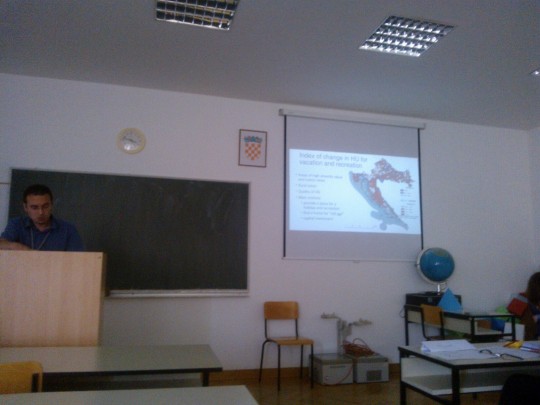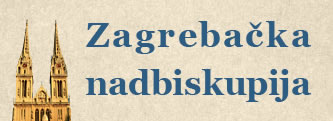U organizaciji Odjela za geografiju, Odjela za etnologiju i kulturnu antropologiju Sveučilišta u Zadru, Sveučilišta Roehampton u Londonu, Sveučilišta u Mainu i Znanstveno istraživačkog centra SAZU u Ljubljani organiziran je međunarodni interdisciplinarni znanstveni skup Movement, narratives and landscapes koji je održan u Zadru od 5. do 7. lipnja 2015. godine.
Na znanstvenom skupu raspravljale su se teme poput složenih odnosa koji postoje između prostora, mjesta, krajolika i migracija. U posebnim tematskim cjelinama diskutiralo se kako okoliš utječe na svakodnevni život ljudi, ali i obratno kakav je utjecaj turizma, lokalnih, nacionalnih i međunarodnih čimbenika na krajolike. Nadalje, dio tema bio je posvećen simboličkim mjestima, predmetima i idejama koja su dio specifičnih prostora i krajolika.
Konferencija je okupila znanstvenike iz različitih disciplina. Na znanstvenom skupu je prezentiran rad Changes in Features of Housing Units: Croatia 2001 – 2011. doc. dr. sc. Roka Mišetića, zamjenika pročelnika Odjela za sociologiju, doc. dr. sc. Maria Bare s Odjela za sociologiju i izv. prof. dr. sc. Nenada Pokosa, višeg znanstvenog suradnika i izvanrednog profesora s Instituta društvenih znanosti Ivo Pilar i vanjskog suradnika na Hrvatskom katoličkom sveučilištu, čiji sažetak pročitajte u nastavku:
The paper analyses functional and physiognomic changes of housing units at city and municipality level in the Republic of Croatia from 2001 up to 2011. Functional changes are analysed according to statistical categories of housing units, while for the analysis of physiognomic changes the authors used data concerning number and size of the units. During the past few decades the total number of housing units in Croatia has been continuously growing as well as the number of units within specific statistical categories. The same trend exists when analysing the size of the units – in addition to absolute growth, records show increase in average size of housing 80 units as well. The analysis of last inter-census period, when the total number of housing units increased by 19.7%, shows that the change in total number of housing units, as well as change in the number of lower level statistical categories, is spatially differentiated. While coastal region and the capital city register a relatively strong increase in the number of housing units, central Croatia stands out at the other end with the lowest increase rate. Among changes that affected lower category housing units, the increase in apartments for secondary housing stands out. Between 2001 and 2011 their number increased by 36.6%, with the highest rate recorded in coastal cities and municipalities. Census data also indicate an expansion in the number of temporarily vacant housing units during the analysed period, which continues a trend from earlier periods. The significant increase in temporarily vacant housing units during previous decade can be in one part associated with the economic crisis and recession that created an excess of units on the market. On the other hand, the reasons can also be found in the fact that registered changes are not following the rate of demographic development of Croatia. Increase in the number of developed units does not reflect real needs for housing, but can instead be interpreted as a sort of preservation of value when considering citizen’s savings. This, however, represents the “occupation” of space and its permanent dilapidation.





